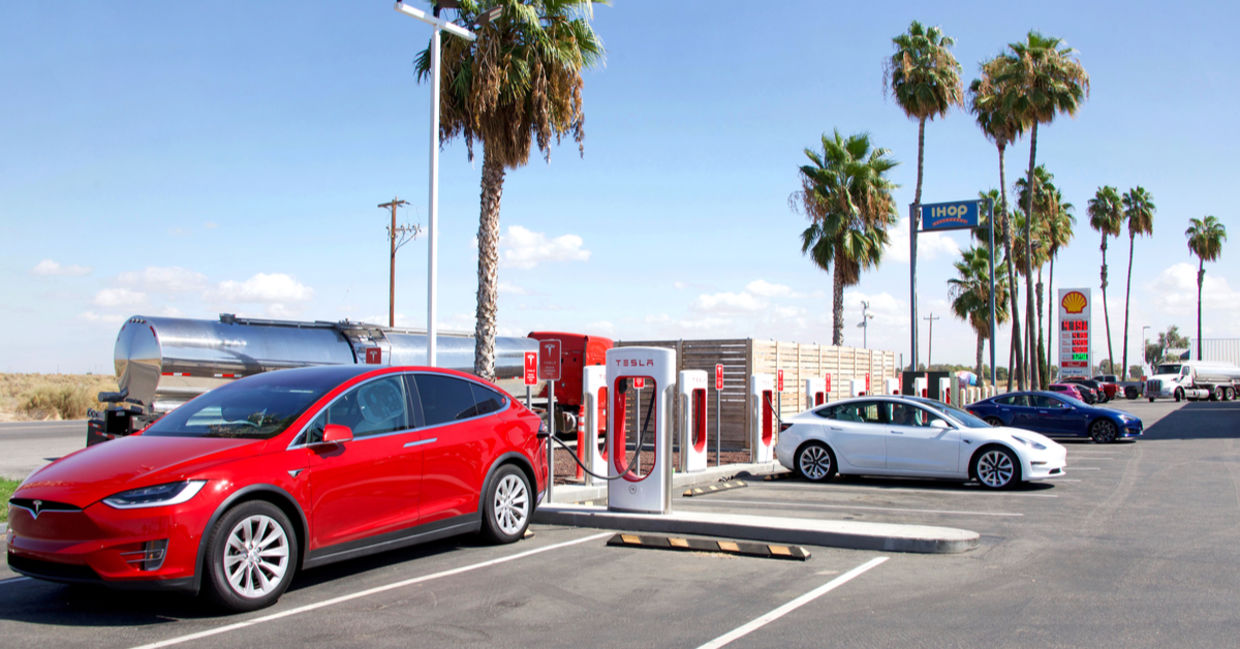
(Sheila Fitzgerald / Shutterstock.com)
California has had stricter emission control laws than the US federal regulations since 1967. Enacted during a time of high air pollution, these regulations helped to reduce the smog that engulfs the Los Angeles basin. Over the last 50 years, the state has fought to remain on the forefront of pollution control according to Stanford University, in an effort to help combat pollution and climate change.
That’s why, after the hottest August temperatures recorded, and five of the largest wildfires, the state is working hard to combat greenhouse emissions. California recently finalized deals with automakers to produce cars averaging 51 miles to the gallon but now the state is going even further.
On September 23, 2020 California’s governor Gavin Newscom announced that he signed an executive order that requires all new cars and passenger trucks to be zero-emissions by 2035, according to a California government press release.
In fact, transportation is responsible for over half of all the state’s carbon pollution, 80 percent of smog formation, and 95 percent of diesel emissions. Reining this in is both a health and an environmental concern.
“This is the most impactful step our state can take to fight climate change,” said Newsom in the press release. “For too many decades, we have allowed cars to pollute the air that our children and families breathe. Californians shouldn’t have to worry if our cars are giving our kids asthma. Our cars shouldn’t make wildfires worse – and create more days filled with smoky air. Cars shouldn’t melt glaciers or raise sea levels threatening our cherished beaches and coastlines.”
The target of 100 percent electric passenger vehicles by 2035 will result in a 35 percent reduction in greenhouse gas emissions and an 80 percent improvement in nitrogen emissions statewide according to the press release.
While the executive order will not prevent state residents from owning, buying or selling used gasoline vehicles, it is still a good start. Medium and heavy vehicles are required to also be zero emissions by 2045.
“When we are looking to achieve our audacious goals to get to a 100 percent carbon-free economy by 2045, we can’t get there unless we accelerate our efforts in the transportation sector,” Newsom told reporters at a press conference announcing the executive order.
To ensure that this plan will work, the government will partner with the private sector to rapidly build charging stations, and to support the EV industry. This will also help in job creation at a time when the economy is suffering from the effects of the coronavirus pandemic.
California is the first state in the US to commit to phasing out fossil fuel vehicles but it joins many cities and countries including Singapore, France, Germany, and Israel in doing so.
Many car makers are already manufacturing more electric cars including Toyota, Honda, Volkswagen, Hyundai, and Tesla. And many countries are working on building charging stations. With manufacturers and infrastructure leading the way, a global switch to EVs will hopefully follow these important steps taken by California.
YOU MIGHT ALSO LIKE:
Can an Electric Car Drive From Amsterdam to Australia?
This Company is Creating Eco-Friendly Cars from Classic Autos
Researchers Developing Electric Cars That will Recharge Themselves







